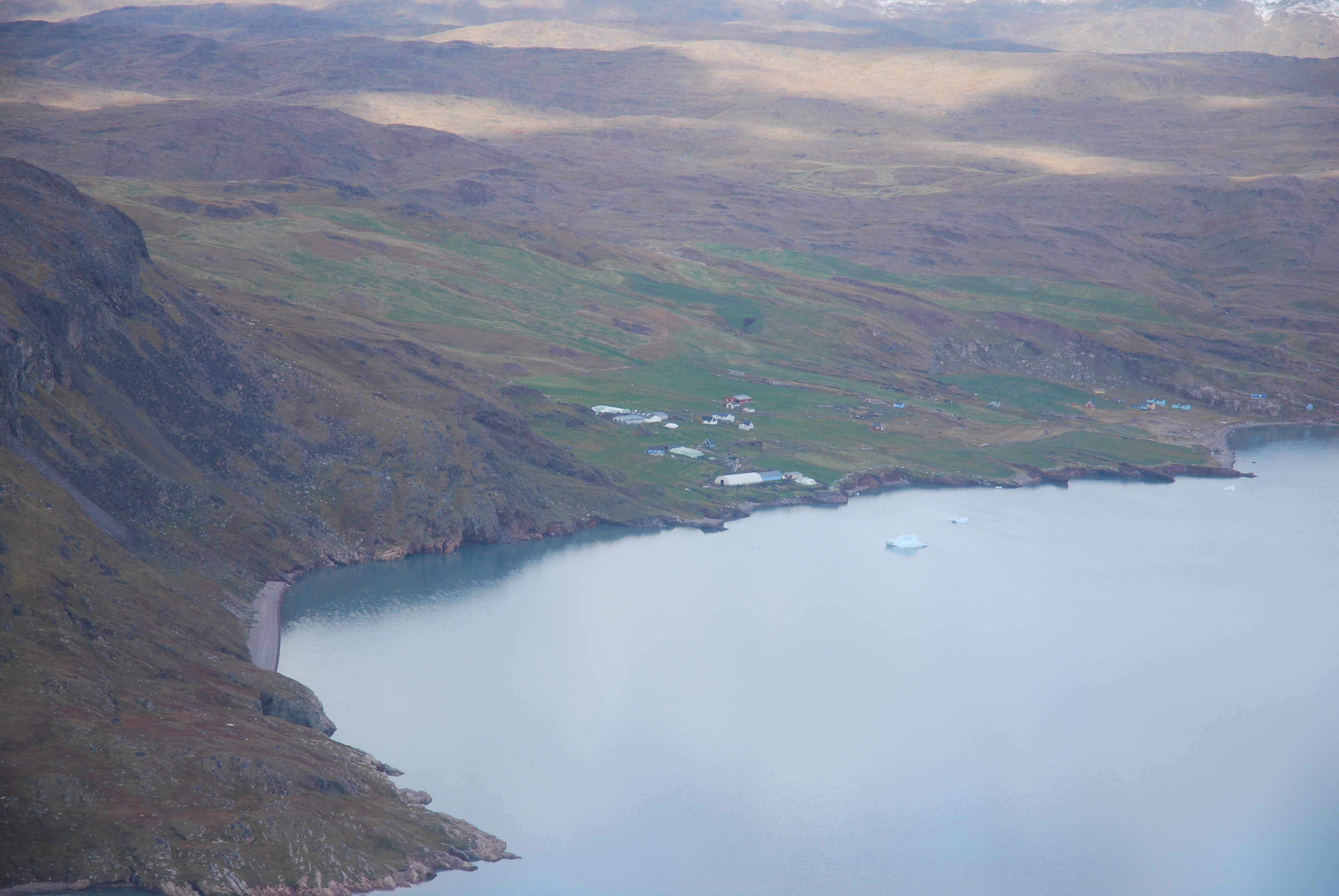Sheep farming plays an important role in Greenland’s economy, accounting for 80% of agriculture-related income. A large number of these farms are located in the southern Greenland municipality of Kommune Kujalleq. Recent work to generate fodder from local waste products and locally produced silage has greatly reduced the risks posed to the industry by the harsh winter conditions. In turn, this improved stability has increased the potential of the industry to contribute to regional economic development.
A short history of sheep farming in South Greenland
Sheep grazing was originally practiced in South Greenland by Norse settlers between 985 and 1450 (Fielberg & Høegh 2008). Modern sheep farming did not commence until 1925 and was based on year-round grazing until the 1970s, with small supplements of winter fodder and occasional stabling.  In 1982, a new plan for sheep management was introduced as a means of increasing the number of sheep farms. The plan involved the Sheep Farmers’ Association in collaboration with the Home Rule Government, and was expected to develop a business that could contribute to the Home Rule’s overall goal of a society largely based on the country’s renewable resources. The plan included stabling the sheep for seven months of the year and allowing them to graze in the outlying fields for the other five (Fielberg & Høegh 2008).
In 1982, a new plan for sheep management was introduced as a means of increasing the number of sheep farms. The plan involved the Sheep Farmers’ Association in collaboration with the Home Rule Government, and was expected to develop a business that could contribute to the Home Rule’s overall goal of a society largely based on the country’s renewable resources. The plan included stabling the sheep for seven months of the year and allowing them to graze in the outlying fields for the other five (Fielberg & Høegh 2008).
Growing the sheep-farming industry in harsh conditions
The conditions in South Greenland are harsh. Despite this, the relatively warm föhn winds generally keep the snow cover at a reasonably low level, making the vegetation available for the sheep. From time to time, these winds fail and the snow eventually becomes so deep that the sheep cannot access the food. Even more problematic is when the föhn winds only melt the surface snow, which then freezes into ice. When that happens, the sheep cannot get anything to eat and large proportions of the flocks starve. To address this problem, farmers have experimented with different kinds of winter feed comprising local products such as silage in combination with grass and fish waste. The winter feed acts as a substitute for natural forage and allows the sheep to be kept indoors in stables. Using local products in this way means that winter fodder does not need to be imported. Sheep fodder is also a valuable way to utilise waste products, which contributes to circular economic development in Greenland.
Enabling conditions from a natural and a policy perspective
Warmer global temperatures have resulted in more favourable conditions, which made the first decade of the twenty-first century the most productive in Greenland’s sheep-farming history (Agricultural Consulting Services nd.). At the same time, the milder climate poses challenges, including drought in the summer and an increase in periods where vegetation is covered by ice sheets in the winter and fall (Agricultural Consulting Services nd.). The use of winter fodder contributes greatly to the stability of the sector by making the second of these challenges irrelevant. Although climate is an important factor, public policy has also played a role in supporting the growth of the sheep-farming sector. A 2008 report estimated government subsidies for sheep farming at approximately DKK 10 m per year (Fielberg & Høegh 2008). To put this figure into perspective, the same report estimated the total income from sheep farming at around DKK 20 m per year (Fielberg & Høegh 2008). Government policy also acknowledges the importance of the utilisation of the entire value chain in contributing to increased earnings and improved competitiveness (Naalakkersuisut 2007, in Danish).
Regional dimension
The Greenland case demonstrates one way circular economic thinking can contribute to local industry. By utilising locally available products such as fish waste and silage as winter fodder, the sheep-farming industry, which was originally subject to a wide range of uncertainties, now offers a more stable contribution to Greenland’s food security. Importantly, it does so without putting unsustainable strain on the local ecosystem and without the need to import resources. This has short-term economic benefits because it reduces the cost of production and increases the possibility for the industry to contribute to long-term regional economic development.
Learn more…